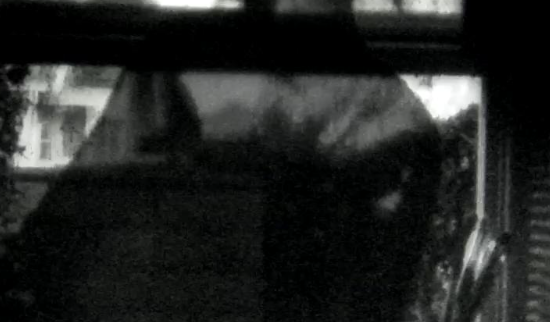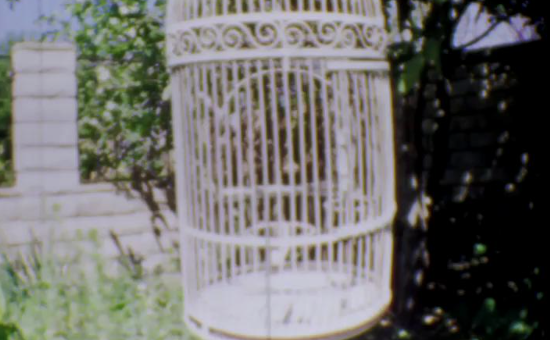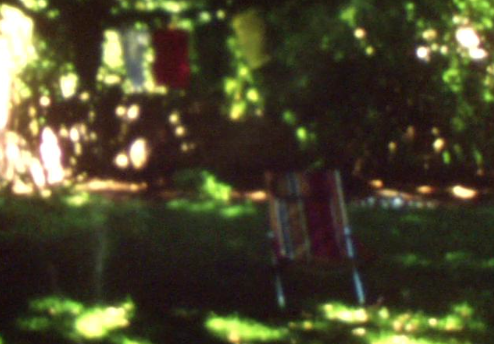Tyler-Marie Evans is a writer, director and producer in Los Angeles, CA. At age 4, she began her career as a dancer and actress in dozens of commercials and television roles, as well as print work, represented by the prestigious House of Representatives Talent Agency in Beverly Hills. At 17, Tyler-Marie attended university in Dallas, studying English and film, and started a vigorous editorial career, working as an Assistant Editor and creatively directing dozens of editorial spreads at Living Magazine. In Dallas, she landed her first screenwriting role, when she adapted The Bride Collector for NYT Bestselling author Ted Dekker. When she moved back to LA at 22, she worked as an Assistant Editor for DC Comics, and then moved to full-time work on the television development team for DC Entertainment, working on projects such as Sandman, DMZ and Sweet Tooth with Netflix and HBO Max. Now, working as an independent director and producer, Tyler-Marie has directed several short films, music videos, commercials, and fashion films for brands. Her work has been featured in the NY Post, Lady Gunn, Copy Paste Magazine, Sticks and Stones Agency, Exposures LA and more. She has worked with brands like Rabôt, Frolov, Bentley and Jet Suite X.
An Interview with Tyler-Marie Evans:
 How did you initially get started as a director?
How did you initially get started as a director?
Directors were always boyish in my mind – ruggedy men with arms full of equipment who hid out in camera shops. Growing up, I worked as an actress in theater and on screen, but in college I was studying English to be a writer. I thought being a renegade writer like Ernest Hemingway would be marvelous.
Then, in order to fulfill a college elective, I ended up working as a script supervisor on a feature film set. One day we were shooting, it began to thunder and rain – perfect for the shots we were getting that day. So, we all made raincoats out of garbage bags and made the shot… As I worked side by side with the director that day, my eyes opened to what directing really was. He was telling a story with pure visual language. It was no longer a masculine role in my mind – it was a human one. My love of the cinema met my conviction as a storyteller that day.
That was my Sophomore year of college, I was eighteen years old. And since that day, I have known what I’m supposed to do with my life and been consumed by it really. I’m a director.

You direct a variety of projects from narrative films to commercials, music videos, and fashion films. How does your process differ based on the medium?
A mentor once told me that the key to directing was keeping a close eye on your own humanity. Though abstract, that certainly dictates my approach. When I begin work on a commercial, or a music video – I take myself through everything that comes to mind in terms of feeling.
I was working on a fashion film – all the colors of the clothing were striking, but the fabrics were soft, flowing. This brought to mind the Sphinx – a lion’s body, but a human’s head – contrasting elements. I dove into Egyptian mythology because of this instinctive feeling. The stories I read were visceral. We shot the film in the desert. I spoke to the models like they were headstrong queens with conflicting softness in their hearts. Having to make tough decisions but carrying a softness towards life is very human. I was looking for the connectedness in the product.
If a song makes me feel like running away – I’ll do just that. For the Stone Souls music video, my actresses Alina Lee and Suzanna Son got in the car with me and “ran away” – we shot the video on a roadtrip to Palm Springs to create the feeling of reckless abandon, of losing oneself.
See, this process can apply to a song, to a product…to a narrative story. Listen to your instinctive feeling. We need more auteurs – poets of the screen.
Secondly, I always look for some type of challenge to place in the project – something that I haven’t yet done, no matter the medium. This was a piece of advice that I read from Jean Luc Godard that I’ve always followed – if a project is easy and there is no challenge, leave it…
 How would you describe your approach to fashion films?
How would you describe your approach to fashion films?
I’m selfish when it comes to fashion films – my favorite projects to work on. I’m full of nostalgia and dreams, so I treat fashion films like a time machine. While I can’t make plans to go to Studio 54 tonight, or visit the Jazz Age, there might be a piece of clothing, a shade of color, a fabric that can take me to another place. To another feeling, another world.
I think beauty is deeply important and has been forgotten for convenience a lot of times. But, being a filmmaker, I can create a mirage of beauty and nostalgia. I create a place that I want to be, that I want to be a woman in. The feeling of beauty is sensual, intoxicating.
Have you touched a piece of satin before? Or silk? And have you imagined being a whole different person? In a different world? There’s an aristocracy to how we dress ourselves. We can create cathedrals of what would normally be just bricks and glass. There is much power in physical representation.
Now, that is how I view clothing as a woman wearing it. As the director, I have to create a piece of art that’s a combustion of all those things – nostalgia, beauty, and power.
Then, I begin my process with my moodboards, looking for inspiration everywhere – in history, stories, painting, nature, old iPhone videos. I also buy hoards of vintage magazines and love looking through them. There’s visual inspiration, but also movement inspiration. I like to sit at Figaro Bistro with a latte and watch people walking down the street. Look at what strangers are wearing, watch how it makes them feel – how their body moves. What is their expression? Can we tell a story in a moment – in a look? There is inspiration everywhere – just go find it.
 What do you look for in collaborators?
What do you look for in collaborators?
Passion is always a top contender for me. I love when people pour themselves into their work. That is someone who is going to work hard and be detailed, when they love their work just so much.
Then, I want people to think the project has the potential of deeper connectivity with audiences. If someone is looking for a deeper purpose in their work, that always speaks loudly to me. We could all just sit in cubicles at a 9 to 5, but we’re taking the risk so we can tell stories and we can participate in a form of art. Owning your creativity is infectious, to say the least.
Would you tell us about one of the project that you’re most proud of?
Here or There was an important part of my career for me – it was a project that really broke down so many walls. That made me believe that anything was possible.
Before I started on it, I hit a wall as a filmmaker. I was working at DC Entertainment at the time – around the clock. It was a fantastic job on the television development team, and I was learning so much, but I felt paralyzed as a director. I knew I was supposed to be a director but I wasn’t directing – nothing more than what I dreamt about at night. I also felt no connection to other filmmaking collaborators in the LA community.
I remember laying in bed, wide awake, and I thought – this will be a test for you, Tyler-Marie. I told myself that I would pour everything into a short film. That I would daily choose to be a director for a short film that I’d make. Then I made a pact with myself – if I couldn’t make a short film on my own, then I would just keep on the studio route and become an executive, forgoing the life of an independent filmmaker. As Robert Frost said, I was staring at a path with two roads at that moment.
I was very honest with myself at that moment – if I couldn’t pull myself up and make a short film, then I wouldn’t be able to go after the career of being a director. I knew that the greatest moment to do anything is the present. The next few months were characterized by non-stop work. When I got home from Warner Bros, I would write, cast, cold email and message everyone in my network.
Looking back at the beginning of the journey, feeling like I couldn’t even make a short film. I don’t recognize that girl. Here or There taught me so much about the filmmaking process about directing, about sculpting your own vision. The project paired me with longtime collaborators – actors, my DP and so many others. It empowered me for the career I have now.
The film itself is about a young girl who chooses to daydream about someone who doesn’t love her instead of pursuing the present. Bergman wrote that he made films about his greatest fears, and I guess that’s what I was doing. I was afraid that I’d lose myself in a dream but never make it into something real. Looking back, that fear no longer exists. And my film proved it.
 What is “success” for you?
What is “success” for you?
The director Krzysztof Kieslowski wrote – “At a meeting just outside Paris, a fifteen-year-old girl came up to me and said that she’d been to see [The Double Life of] Véronique. She’d gone once, twice, three times and only wanted to say one thing really – that she realized that there is such a thing as a soul. She hadn’t known before, but now she knew that the soul does exist. There’s something very beautiful in that. It was worth making Véronique for that girl. It was worth working for a year, sacrificing all that money, energy, time, patience, torturing yourself, killing yourself, taking thousands of decisions, so that one young girl in Paris should realize that there is such a thing as a soul. It’s worth it.”
That to me is success. I dream of moments when I can connect to another human with a film. Every project, every experience – all of it is working towards that, towards that connectivity. Being a successful director to me means every project ends up in that moment, in that chance meeting, that what I’ve done has spoken to someone in a deep way and lets them know that they are not alone.
That, and the joie de vivre. I think much of success comes from the joy of living
Contact Info:
tyler-marie.com
@livingwithfreckles




No Comments